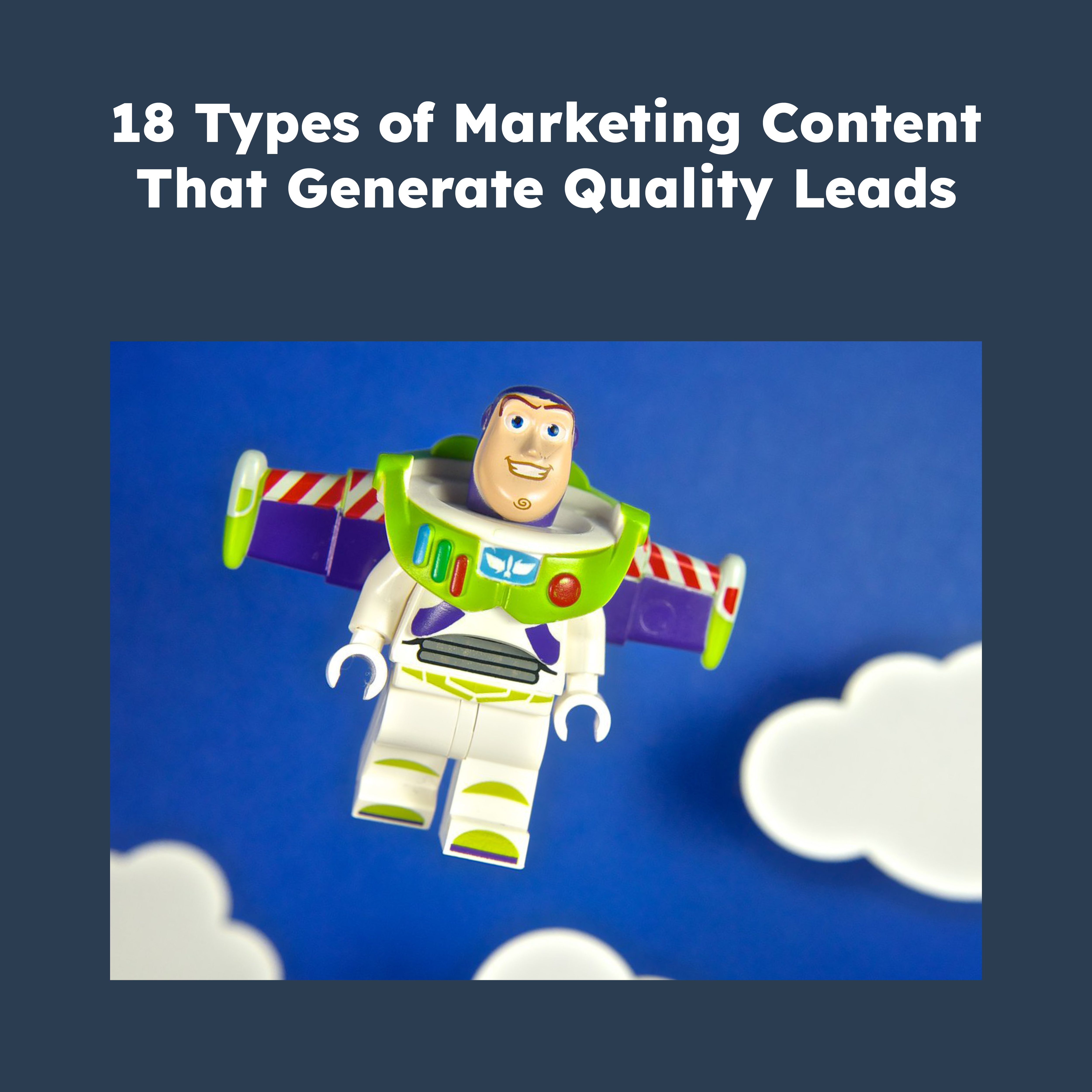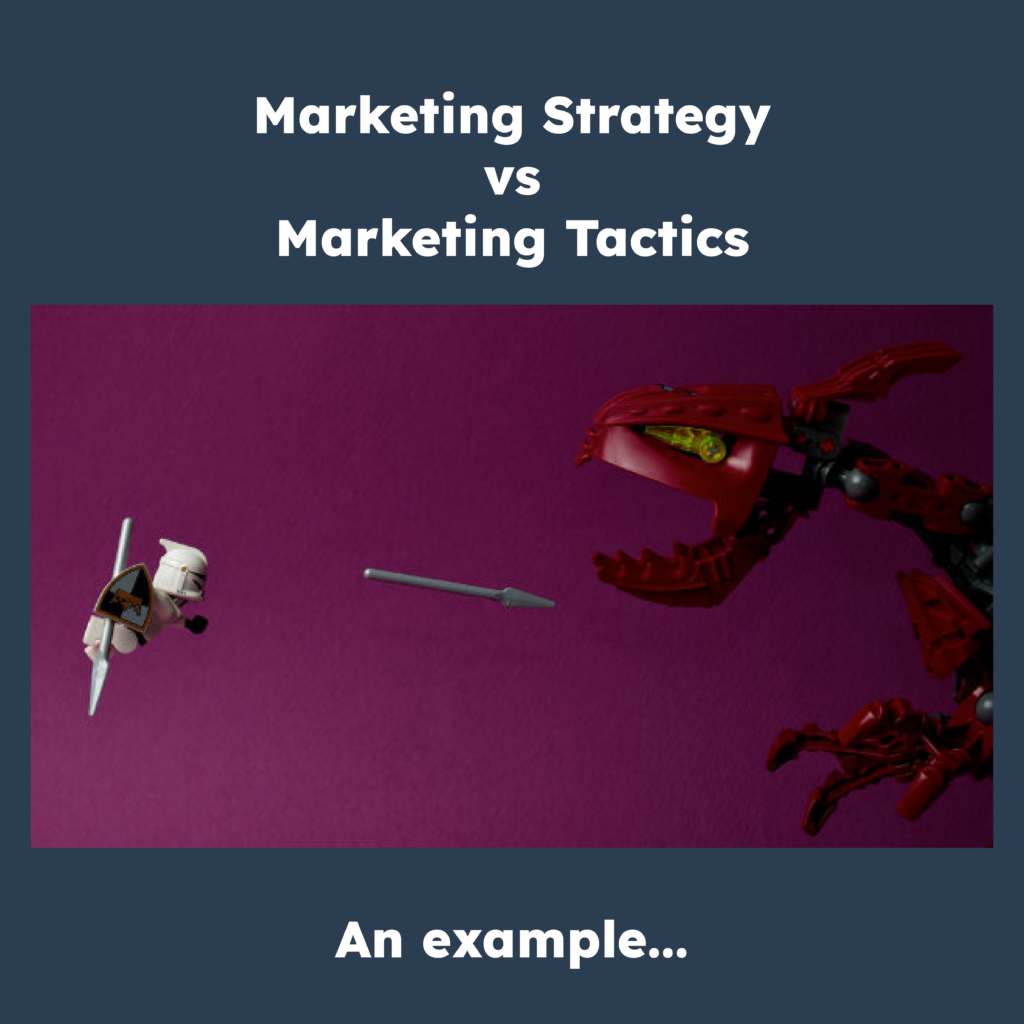Top tips for creating content that converts at every stage of your sales funnel
Publishing high-quality content is one of the most effective ways for a business to generate good quality leads. However, creating content that will resonate with both your prospects and existing customers can be quite a challenge. How can you pique people’s interest, regardless of where they are in the sales funnel, without ending up with a diluted message that doesn’t hit the mark for anyone?
This guide goes through all the content formats available and when they should be used to optimise conversions, along with a few top tips on how to make the most out of each type of marketing content.
In this article, you will discover:
Top of Funnel Marketing content
At this early stage of the purchasing journey, your objective should be to raise awareness of your brand by generating traffic to your site, or by increasing your brand’s visibility.
1. Long-form evergreen blog posts
These information-driven pieces dig deep into a particular topic and provide plenty of opportunities for SEO optimisation.
Select a topic you are an expert in and start with top-level information, then branch off into smaller, more specific sub-questions. You could also link out to other resources available on the same subject, or add graphics and visuals to back up the information.
Top tip: Start by creating evergreen content that will remain relevant, and make it indispensable for your audience.
2. Short-form and news-related blog posts
Shorter blog articles (maximum 500 words) allow you to quickly react to the latest news and events, and to generate traffic based on topical keyword trends. Bite-sized content is also easier to absorb for readers, making it more likely your content will be consumed. However, bear in mind that these articles will become less relevant faster, and it will be more difficult to rank in search engines. Evergreen content, on the other hand, will gain traction over time.
Top tip: Find something happening that will have big implications for your audience and write about it. It’s even easier to leverage attention if you have a particularly controversial opinion, as this will get traffic.
3. Curated lists
A curated list should make your audience’s life easier. This type of marketing tool rounds up useful events, awards, stats, books or any other resources into one easy-to-refer-to document, saving your customers from having to do the research themselves. Curated lists could include content you produced yourself, or other external resources.
Top tip: There is a fine line between useful content and clickbait. Don’t be Buzzfeed! Deliver on your content promises.
4. Podcasts
This audio medium can be consumed anytime, which fits the modern learner’s lifestyle well. Podcasts also give you plenty of opportunities to be creative: invite special guests to drive new traffic and create new connections, or film your podcast and repurpose the footage as a series of short videos or social posts afterwards.
Top tip: Will your podcast be focused on SEO (and hit topics that will be searched for time and time again), or will it be guest-led? If it’s the latter, ask yourself: “Who could I invite to bring a new audience to my business?”, and who will promote it when they are a guest?
5. LinkedIn carousels
Adding multiple images in a single post is easy with LinkedIn carousels. And these make a refreshing change from long-form content: they are less wordy, more visually appealing, and a great way to promote your brand’s visual identity. Use longer blog posts, and chop them down into smaller bite-sized pieces that could double as carousels (and Twitter Threads).
Top tip: The best way to create good LinkedIn carousels is to spend time on these platforms and to look at other brands who do this well. As with most content formats, absorb what works well and remix it for your brand.
6. Short videos
Attention spans are getting shorter, and snackable content is easier for viewers to consume on the go. In fact, 96% of consumers prefer short-form videos (15 to 60 seconds long). This probably explains why short videos have the highest ROI. Use them on your social media platforms (TikTok, Instagram, LinkedIn, YouTube) and make sure you post often to keep up the momentum.
Top tip: Repurpose your long-form videos and get the most out of them. There is an interesting little start up called Opus Clip, which can give you a pretty good selection of clips from a longer YouTube link. Already putting text transcripts over your videos.
7. Guest blog posts
The main benefit of writing a guest post to be featured on another blogging platform? You’ve already got an engaged community of potential customers ready to hear what you have to say! What’s more, writing guest posts allows you to include links to your own content throughout the article, giving you added SEO value. It’s also a good way to boost your network and to connect with people who work in your industry.
Top tip: Again, you could repurpose articles you’ve already created and rework them slightly to fit other websites. If you can find sites with an audience that fits your customer profile, guest blogging can be an easy way to tactically improve your SEO.
Middle-of-funnel marketing content formats
At this stage, you’re trying to keep in touch with your audience and to generate interactions. You’re also trying to be seen as a valuable brand and to gather contact details to grow your email list.
8. Data-driven research and surveys
Commissioning original research or running a survey to generate reliable data is an excellent tactic when it comes to building your brand’s credibility. Becoming known as an industry resource will lead to repeat traffic, and you can put your research behind a lead capture wall to generate useful customer data.
Top tip: Make sure you keep your research up to date, and use graphics to visualise it and re-use it on social media.
9. Webinars
Webinars are online training courses designed to build your network and to generate new connections. In an increasingly virtual world, they are also a good platform to use to interact with your customers and to see them in real life (IRL).
Top tip: Pick something that’s a pain point for your customers, show them how to address it and back this up with a case study or some other resources. Share recordings and transcripts, and cut webinars into shorter videos, or turn transcripts into blog posts for additional content.
10. Infographics
Mixing data and visuals is the best way to promote your brand and to bring boring stats to life. It’s been proven that infographics optimise information cognition and help users see patterns and trends more easily. There are plenty of formats available, from timelines to lists and statistics, all of which are effective for generating user engagement.
Top tips: Don’t create images full of text as these are not accessible or scannable. Instead, spend time with designers and focus on turning complex concepts into simple diagrams.
11. Whitepapers
When even a long-form blog article won’t cover everything there is to say, whitepapers let you delve deeper into a specific topic. Use your own views or research, or external data, to create your whitepapers. When optimised well, these can really boost SEO rankings and help you grow your email list.
Top tip: Turn whitepapers into practical tools. Include advice that people can immediately put into practice, and your content will already be better than 90% of the resources out there.
12. Templates, cheat sheets and worksheets
These deliverables can really position your brand as a useful brand. Templates and worksheets are extremely valuable for your customer base, and can save people a lot of research time. Start by producing guides, templates and checklists to build trust, then focus your efforts on the next logical step: buying something from you!
Top tip: Find out what your clients are looking for, and create checklists and templates to facilitate their journey. Build goodwill with your prospects: even if they don’t need your services now, they may later. By that point you’ll already have their trust.
13. Demos and how-to videos
Capitalise on the ‘how to’ online search trend and produce your own content. Demo videos are engaging, useful and they allow viewers to connect with your brand, to see how great your products are.
Top tips: Don’t limit yourself to one format. Pre-record your videos, or film a live webinar and use it as a ‘how-to’ video afterwards. And make sure your contact details remain visible throughout, so it’s easier for watchers to reach you afterwards.
14. How-to articles
As mentioned above, how-to videos generate plenty of traffic online. However, how-to articles shouldn’t be neglected. While they are aimed at more hands-on customers looking for more in-depth information on how to fix a particular issue by themselves, these articles also position you as an industry expert who holds valuable knowledge.
Find the services that generate revenue for your business, and design step-by-step guides on how to complete specific tasks. If things get too complex or should your users be faced with an edge case, they might call on you for help.
Top tip: Beware of being too generic with your how-to content. It’s a great opportunity to put your own spin on it. Find out what’s already out there, then design something different.
15. Email welcome series
Now that you’ve managed to gather quality email leads by putting some of the content listed above behind a lead capture wall, it’s time to do something with this data. However, sending cold emails to an audience who may not know your brand very well could go down like a lead balloon. A series of welcome emails sent over a short period could be a better introduction to your business and its offering.
Top tip: Your welcome series could really bring the personality of your business to life. Add some GIFs or use humour to show what it’s like to work with you. And don’t settle for boring!
16. Courses on WhatsApp or email
A training course on WhatsApp (or via email) lets you send bite-sized content and specific updates to your customer base in a timely fashion. What’s more, the excitement of a course delivered through an innovative platform is a great way to get people to sign up. Unlike email inboxes, WhatsApp is not filled with junk, so capitalise on this and send a mix of videos, images, audio content and links to resources you’ve already produced for maximum impact.
Top tip: Use WhatsApp sparingly to remain relevant and avoid unsubscribes. Don’t become an SMS-style spammer.
Bottom-of-Funnel Content (Action Stage)
At this stage, your objective will be to generate conversations. Messages should focus on providing the information needed to turn prospects into customers.
17. Case studies and testimonials
Case studies are the ultimate proof that your product works. They should be used to build trust with your potential customers, as well as demonstrate your brand’s approach to solving a business problem.
Top tip: Think outside the box. Use different formats, create video testimonials, and get creative with your case studies.
18. Service pages
The purpose of a service page is simple: to make it easy for customers to buy from you. Add these to your website by following the recommendations below:
- Make sure you answer the top sales question.
- Add relevant proof points (for example, you could link to your case studies, or connected services).
- Create one page per service, and optimise it for this particular service. This way, it will become a good entry point from Google search pages.
- Add a clear Call to Action (CTA).
Top tip: Don’t forget to add internal links from all the pages that have relevant anchor text on your website. Also, if there aren’t many pages linking to your service pages already, think about creating additional content that could then point towards them.
19. Landing pages
As opposed to service pages, landing pages feature a single CTA. This could be, for example, providing an email address, downloading an e-book or buying a course, and no other navigation options should be available to visitors. Landing pages are often used for specific marketing campaigns as they generate great conversion rates.
Top tip: Remove your site’s navigation bar or any other links or resources. Landing pages exist for one purpose only: to capture contact information so you can follow up with your prospects. Make sure your resources are valuable enough for people to want to leave their contact details. Also use thank you pages, to show your what next. What actions do you want your prosects to do next after downloading the ebook etc.
Repurposing your marketing content for evergreen promotion
This list may seem exhaustive, and many business owners and founders may find it difficult to keep up the momentum when it comes to content creation.
My advice? Start small. You don’t have to do it all in one go. And focus on creating reusable content that you can repurpose in more than one way, on more than one platform.
Write good quality, big content, then chunk it up into smaller sections which you can schedule over the next few weeks. Next thing you know, you’ll have several months’ worth of content ready to be published on all your platforms.
Ready to talk about how you could use marketing content to generate leads that convert? Book a chat with me.



